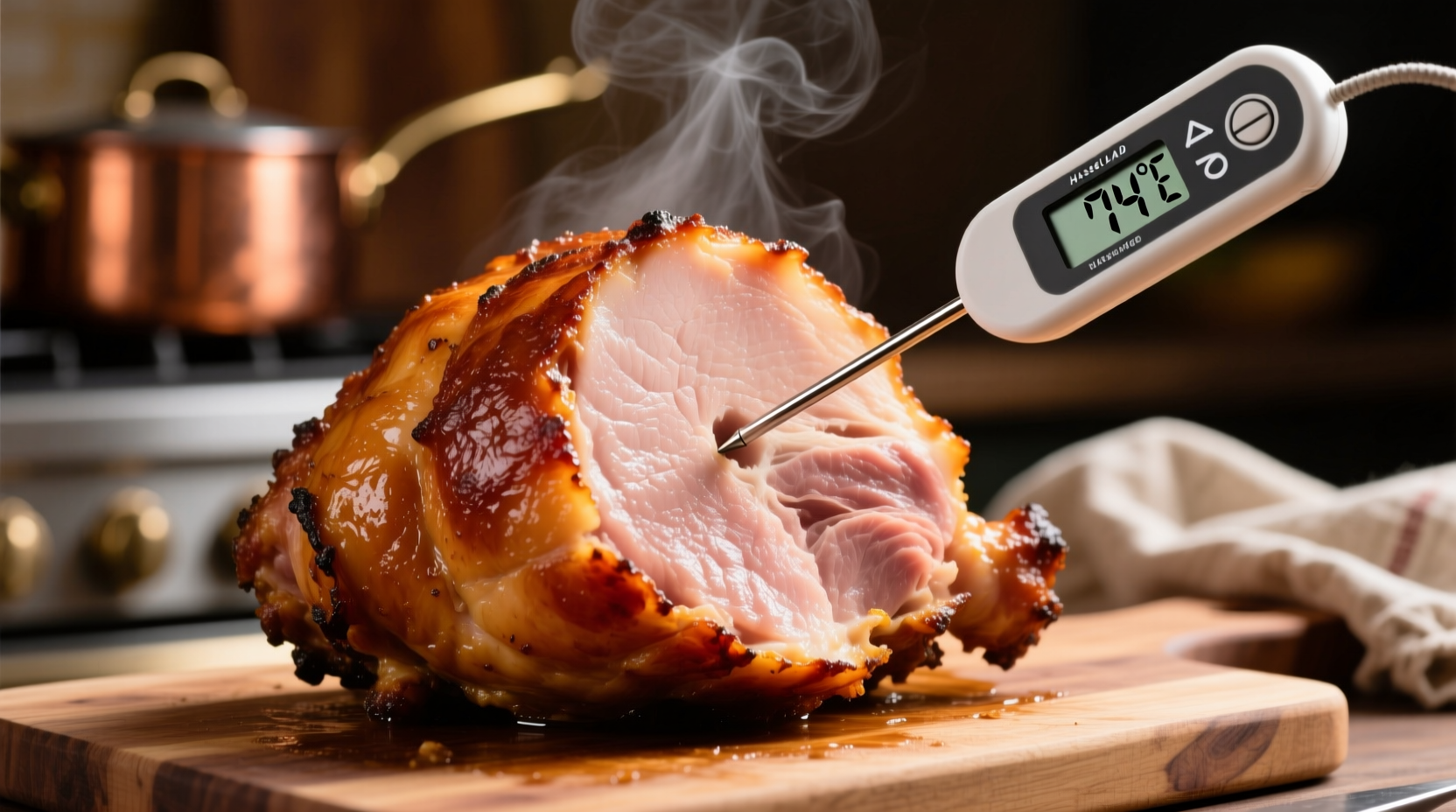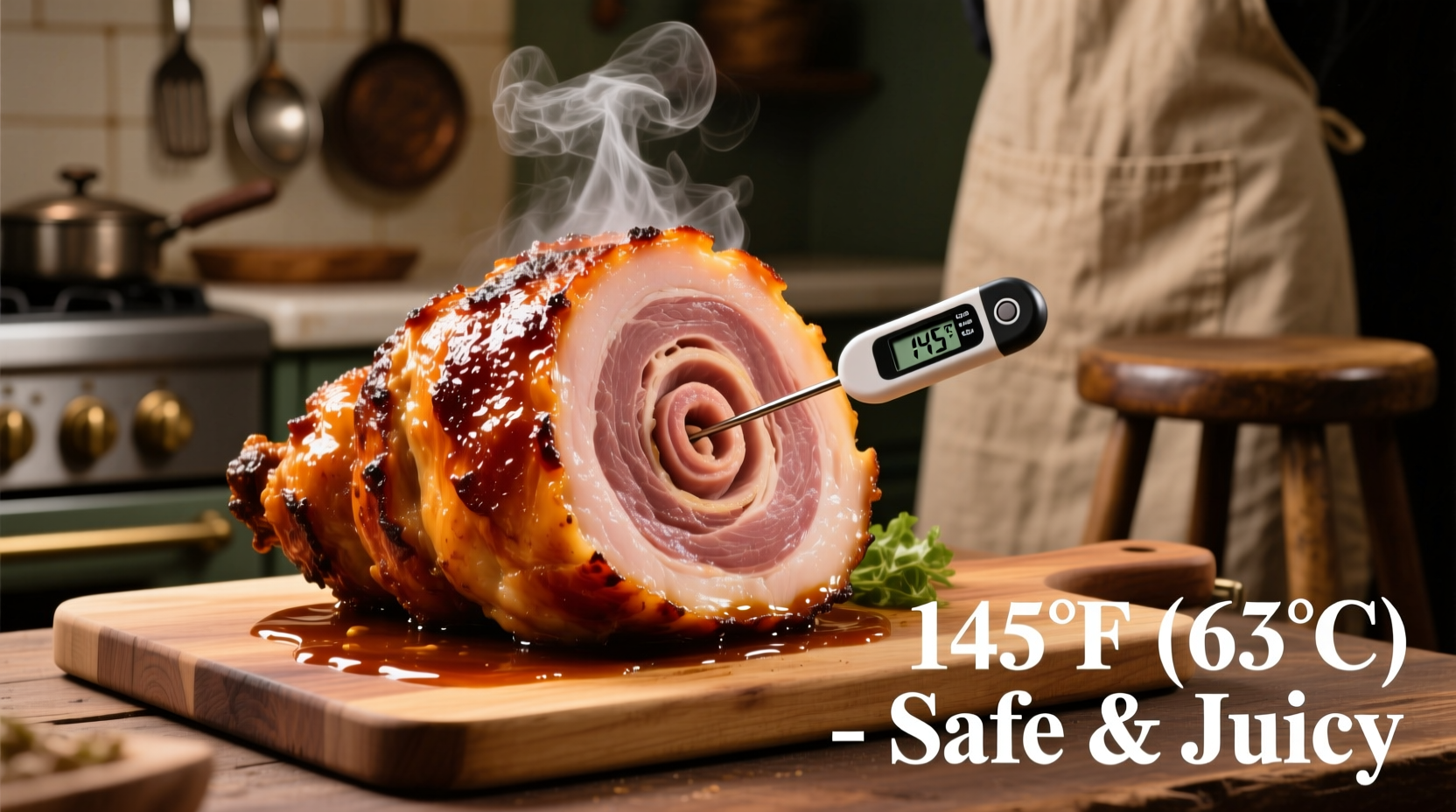Nothing ruins a special meal faster than dry, overcooked ham or worse—undercooked ham that risks foodborne illness. Getting the temperature right transforms your holiday centerpiece from disappointing to divine. This guide cuts through the confusion with science-backed precision so you can serve perfectly cooked ham every time.
Why Ham Temperature Matters More Than You Think
Ham's delicate balance of fat and protein makes temperature control critical. Under 140°F risks Salmonella and Staphylococcus contamination, while exceeding 150°F triggers protein denaturation that squeezes out moisture. The USDA's Food Safety and Inspection Service confirms that 140°F is the minimum safe temperature for pre-cooked hams, providing a 6.5-log reduction in pathogens—the gold standard for food safety.
| Ham Type | Target Internal Temp | Rest Time | Source Verification |
|---|---|---|---|
| Pre-cooked/City Ham | 140°F (60°C) | 3 minutes | USDA FSIS |
| Raw/Fresh Ham | 145°F (63°C) | 3 minutes | FDA Food Code §3-401.11 |
| Smoked Country Ham | 130°F (54°C) | None | National Pork Board |
Your Temperature Toolkit: Beyond the Basic Thermometer
Not all thermometers deliver restaurant-quality accuracy. Digital instant-read thermometers with ±0.5°F accuracy (like ThermoWorks models) outperform dial thermometers that often vary by ±2°F. For holiday cooking marathons, consider a leave-in probe thermometer with wireless alerts—you'll never overcook ham while distracted with other dishes. Always calibrate thermometers using the ice-water (32°F) or boiling-water (212°F) method before use.

Step-by-Step Temperature Journey
Pre-Heat Precision (The 25°F Rule)
Start with oven temperature 25°F lower than your target finish temperature. For 140°F ham, preheat to 275°F. This prevents the dangerous "temperature overshoot" that occurs when residual heat pushes internal temps 5-10°F higher during resting. Convection ovens require 25°F reduction from standard recipes.
Cooking Phase: The Critical 120°F-130°F Window
This is where most home cooks fail. Ham spends 60% of cooking time in this range where collagen breaks down but proteins haven't tightened. Use a spray bottle with apple juice to maintain surface moisture without opening the oven. Insert thermometer probes horizontally through the thickest part, avoiding bone contact which gives false readings.
Resting: The Hidden Temperature Rise
Remove ham at 135°F for pre-cooked varieties—internal temperature will climb 5°F during the mandatory 3-minute rest. Cover loosely with foil to retain heat without steaming the surface. Never skip resting; it allows juices to redistribute, preventing that dreaded dry edge.
Avoiding Costly Temperature Mistakes
Mistake: Relying on cooking time alone
Solution: Time varies by oven accuracy, ham size, and starting temperature. A 7lb ham might take 14 minutes/lb at 325°F, but always verify with thermometer.
Mistake: Testing in multiple spots
Solution: Each probe insertion creates juice leakage points. Find one consistent spot in the thickest muscle away from bone.
Mistake: Ignoring carryover cooking
Solution: Remove ham 5°F below target temperature. The thermal mass continues cooking even off-heat.
Special Cases: When Standard Temperatures Don't Apply
Glazed Hams: Apply sugar-based glazes only during the final 20 minutes to prevent burning. High sugar content caramelizes aggressively above 265°F.
Smoked Hams: Maintain smoker temperature at 225°F-240°F. Target 135°F internal for pre-cooked varieties since smoke penetration affects heat distribution.
Cooking from Frozen: Add 50% to cooking time but maintain the same target temperature. Never thaw ham at room temperature—use refrigerator thawing for safety.











 浙公网安备
33010002000092号
浙公网安备
33010002000092号 浙B2-20120091-4
浙B2-20120091-4